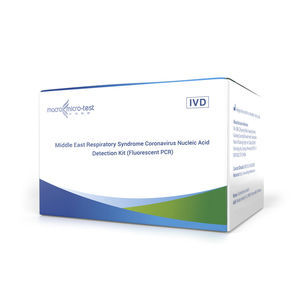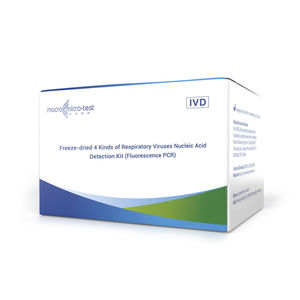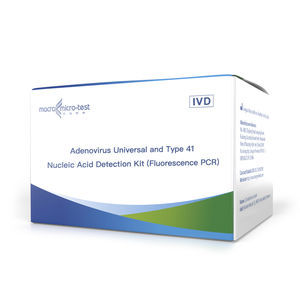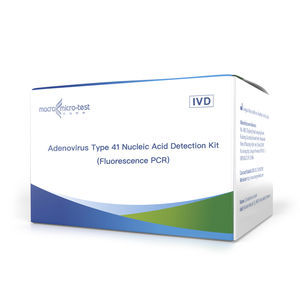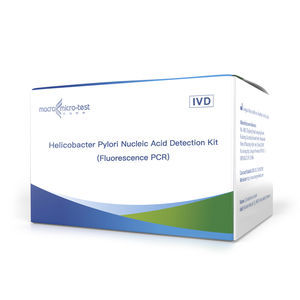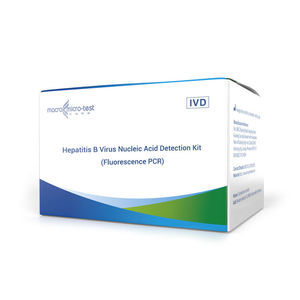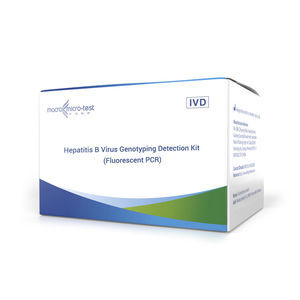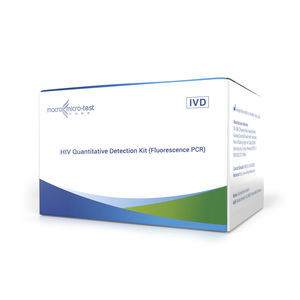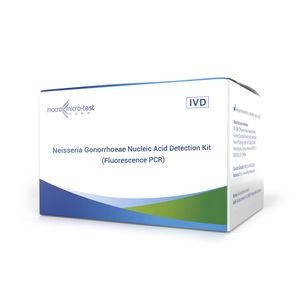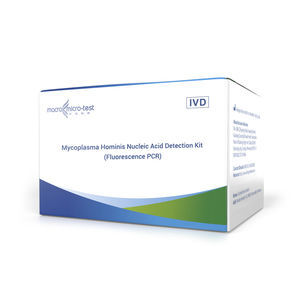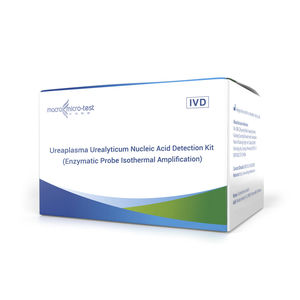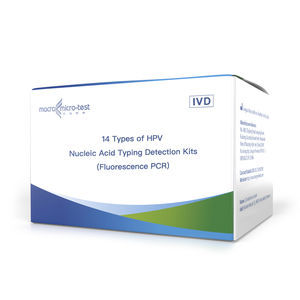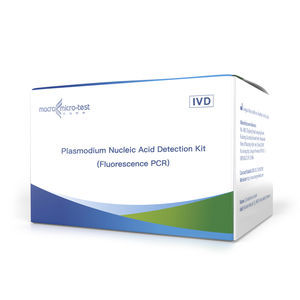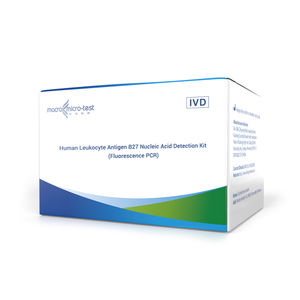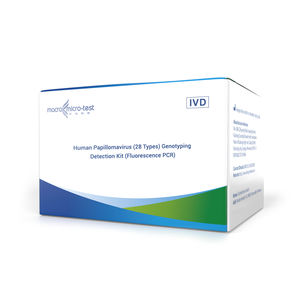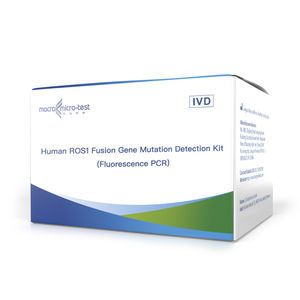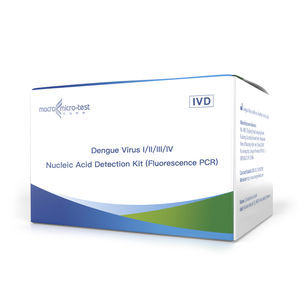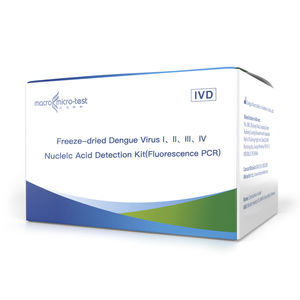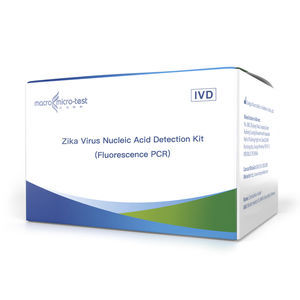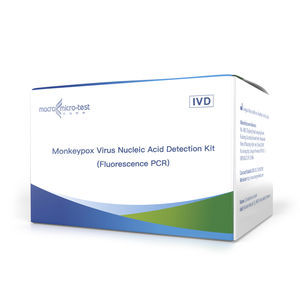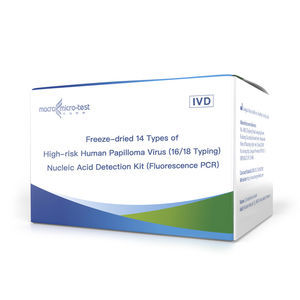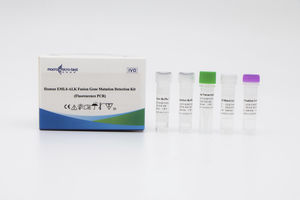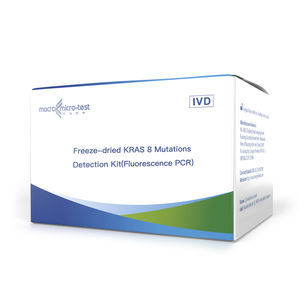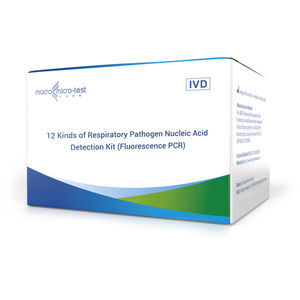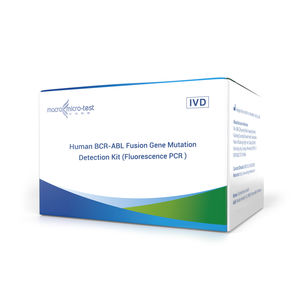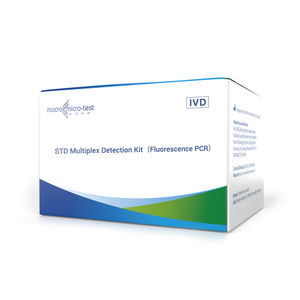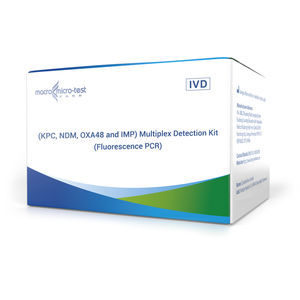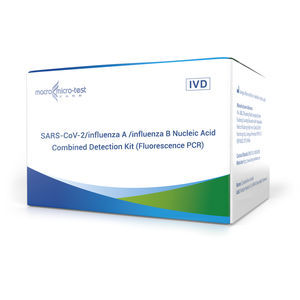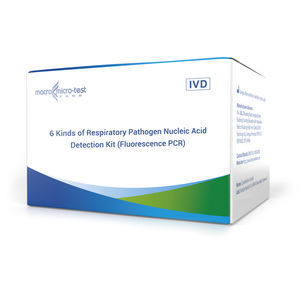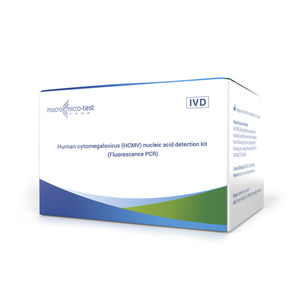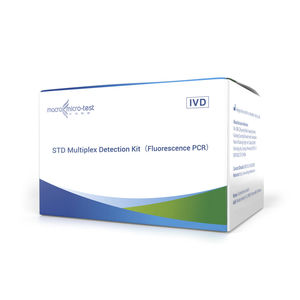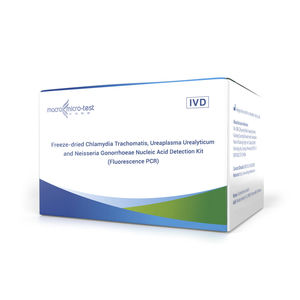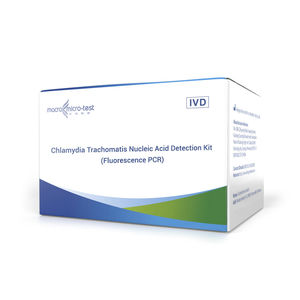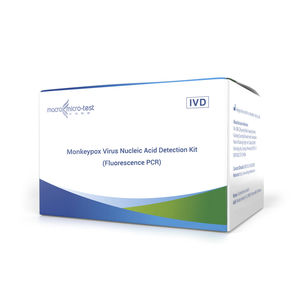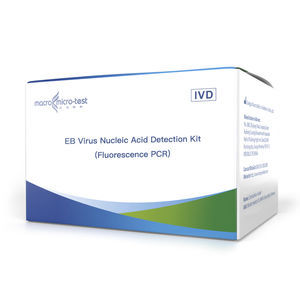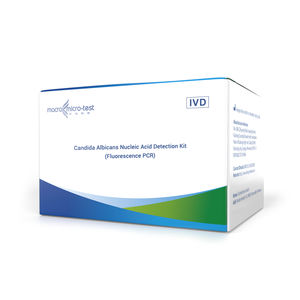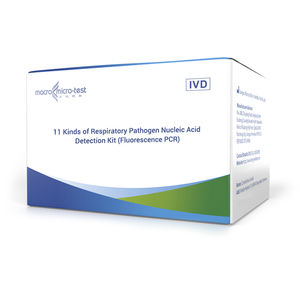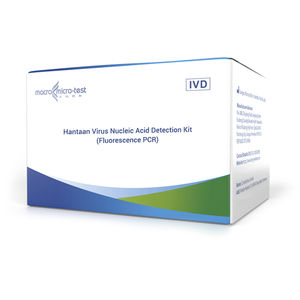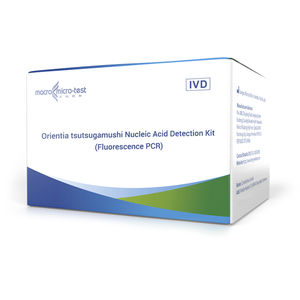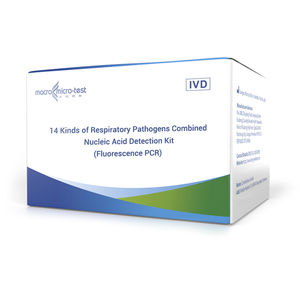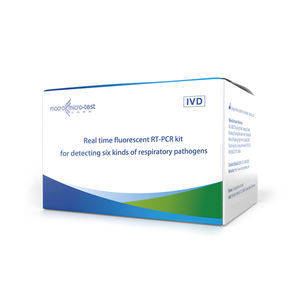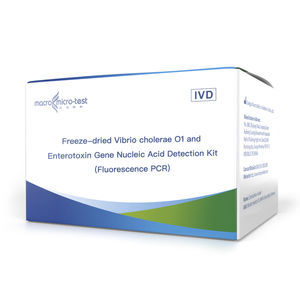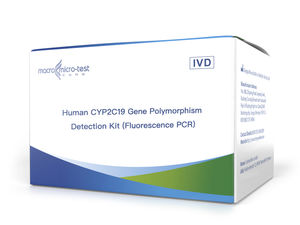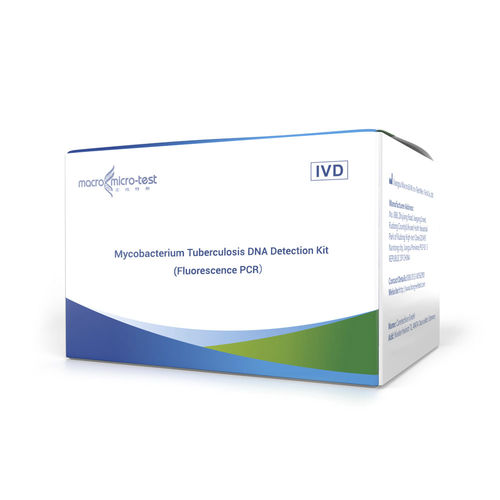
- Laboratory
- Laboratory medicine
- Infectious disease test kit
- Jiangsu Macro micro-test Medical Technology

- Company
- Products
- Catalogs
- News & Trends
- Exhibitions
Infectious disease test kit HWTS-RT001for respiratory diseasesMycobacterium tuberculosissputum
Add to favorites
Compare this product
Characteristics
- Applications
- for infectious diseases, for respiratory diseases
- Micro-organism
- Mycobacterium tuberculosis
- Sample type
- sputum
- Analysis mode
- for RT-PCR, fluorescence
- Format
- lyophilized
Description
It is suitable for qualitative detection of Mycobacterium tuberculosis DNA in human clinical sputum samples, and is suitable for auxiliary diagnosis of Mycobacterium tuberculosis infection.
Epidemiology
Mycobacterium culosis is referred to as Tubercle bacillus(TB). Mycobacterium tuberculosis that is pathogenic to humans is now generally considered to be of human, bovine, and African types. Its pathogenicity may be related to the inflammation caused by the proliferation of bacteria in tissue cells, the toxicity of bacterial components and metabolites, and the immune damage to the bacterial components. Pathogenic substances are associated with capsules, lipids and proteins.
Mycobacterium tuberculosis can invade susceptible organisms through the respiratory tract, digestive tract or skin injury, causing tuberculosis of various tissues and organs, of which the most common is pulmonary tuberculosis through the respiratory tract. It usually occurs in children, and presents with symptoms such as low-grade fever, night sweats, and a small amount of hemoptysis. Secondary infection is mainly manifested as low-grade fever, night sweats, and hemoptysis. Mostly it is long-term chronic disease. In 2018, about 10 million people around the world were infected with Mycobacterium tuberculosis, of which about 1.6 million died.
Channel
FAM - Target (IS6110 and 38KD) nucleic acid DNA
VIC (HEX) - Internal control
Technical Parameters
Storage - Liquid: ≤-18℃ In dark ; Lyophilized: ≤30℃ In dark
Shelf-life - 12 months
Specimen Type - Sputum
Ct - ≤39
CV - ≤5.0%
LoD - 100 bacteria /mL
Other Jiangsu Macro micro-test Medical Technology products
FLUORESCENCE PCR
Related Searches
- Assay kit
- Solution reagent kit
- Blood assay kit
- Serum assay kit
- Immunoassay assay kit
- Plasma assay kit
- Infectious disease detection kit
- Blood rapid diagnostic test
- Diagnostic reagent kit
- Immunoassay rapid diagnostic test
- Molecular test kit
- Cassette rapid diagnostic test
- Rapid virus test
- Whole blood detection kit
- Respiratory infection test kit
- Serum rapid diagnostic test
- Plasma rapid diagnostic test
- Optical assay kit
- Clinical assay kit
- Infectious disease rapid diagnostic test
*Prices are pre-tax. They exclude delivery charges and customs duties and do not include additional charges for installation or activation options. Prices are indicative only and may vary by country, with changes to the cost of raw materials and exchange rates.


